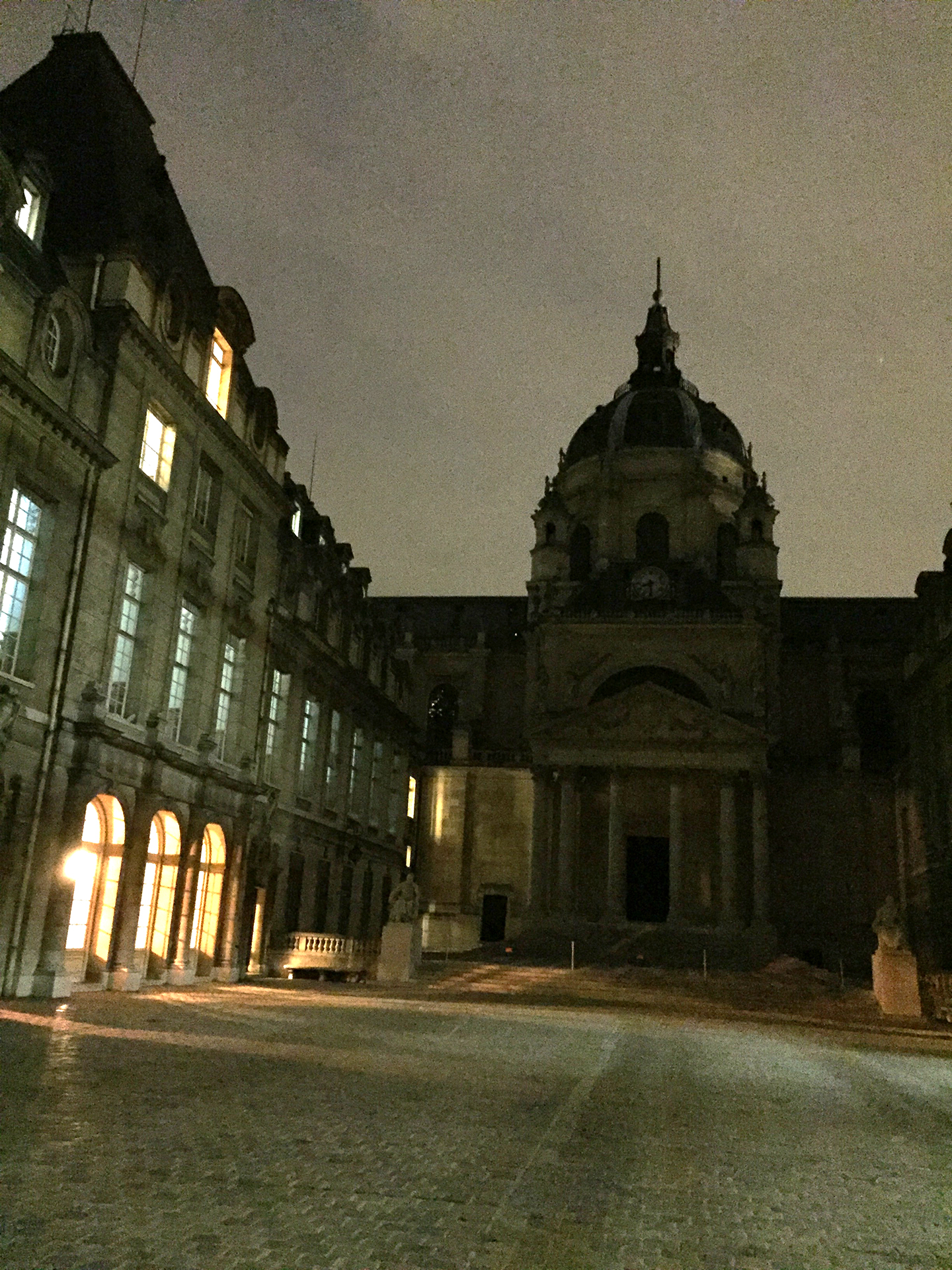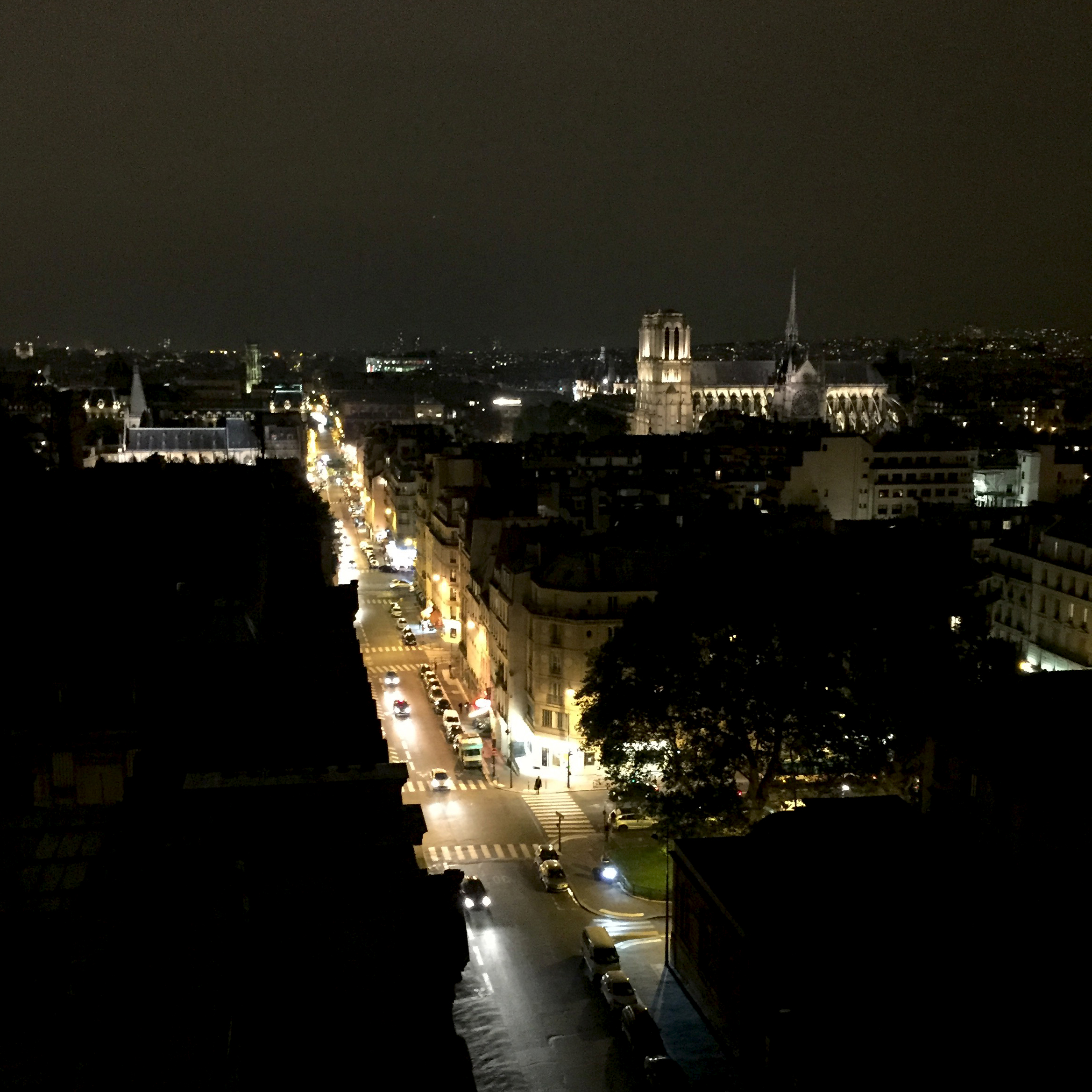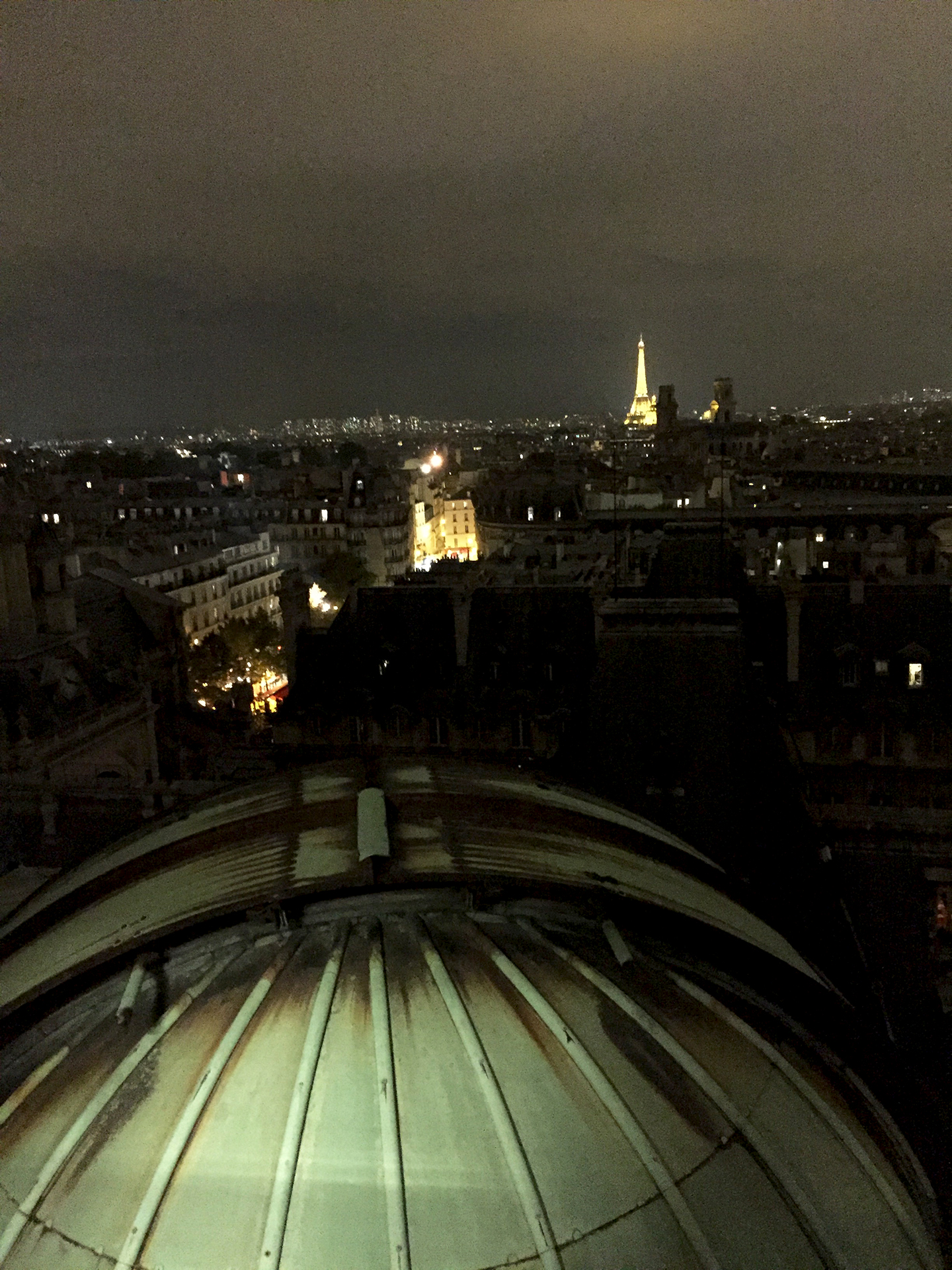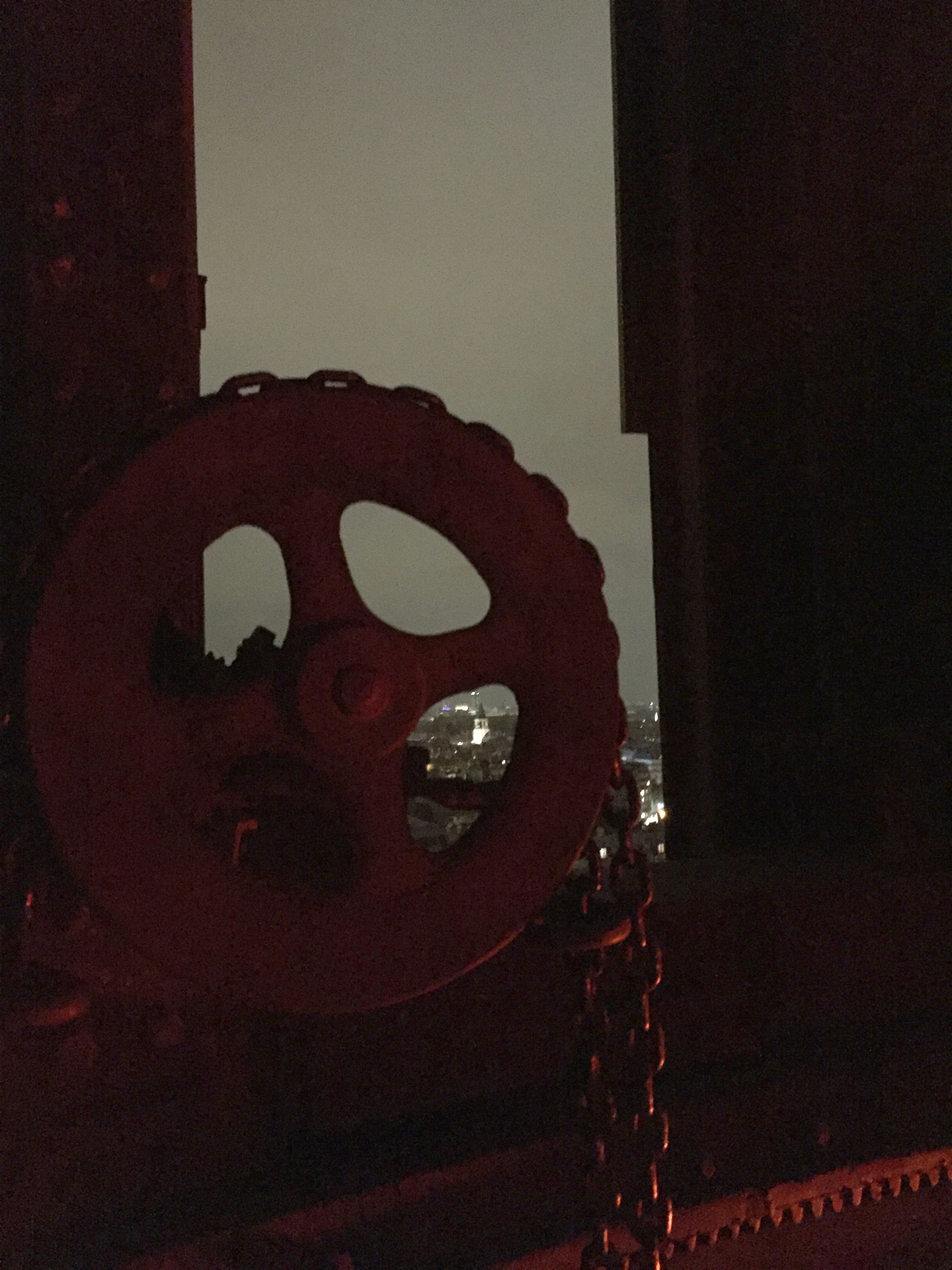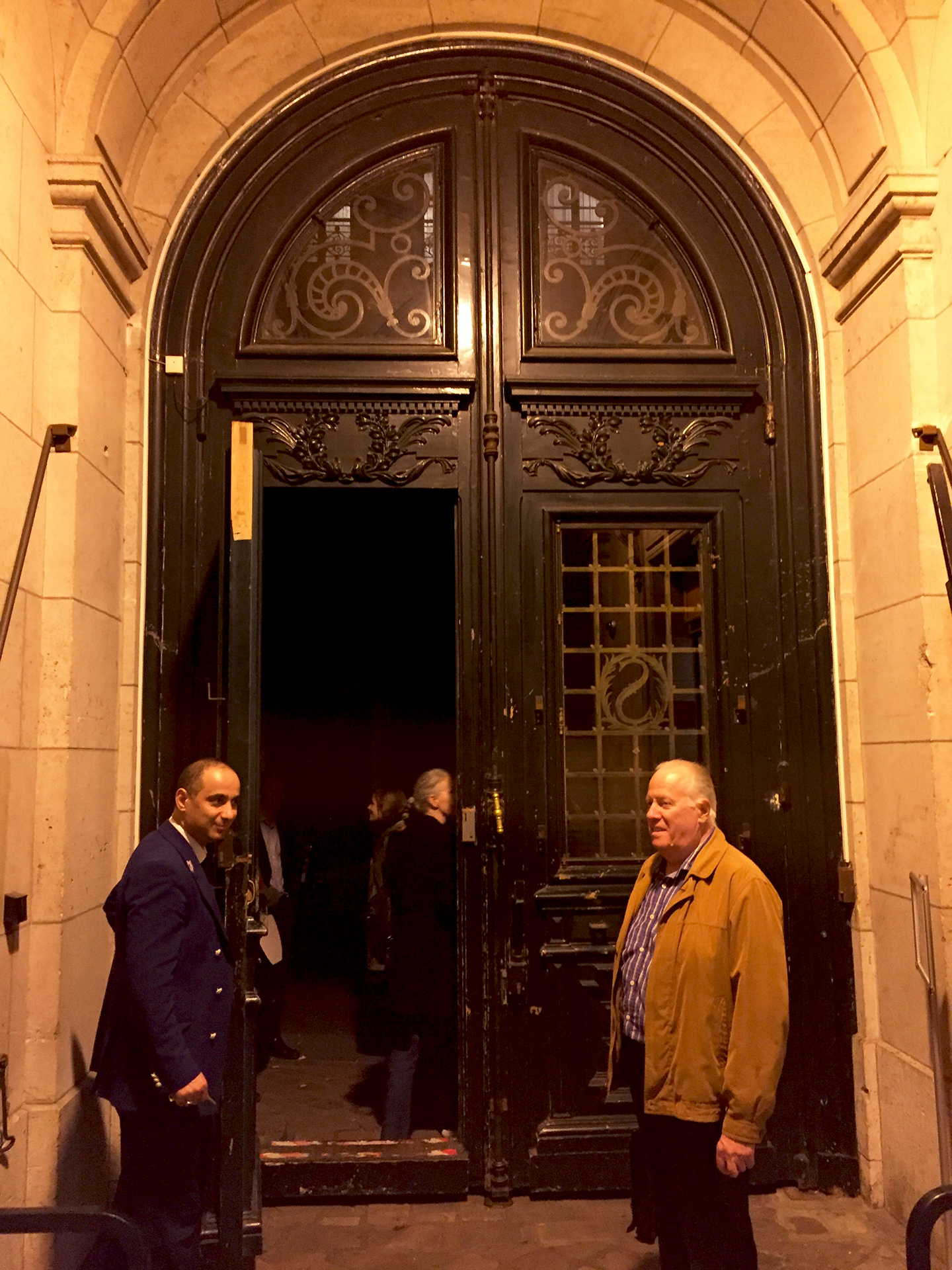Let me take you to a very unusual place in Paris. Chances are that you’ve never stepped into it; in fact, you may not even be aware of its existence. I regularly walked by this location during my student years in the Latin Quarter but, preoccupied with school and bus schedules, I didn’t “look up” enough. Looking up should be a mandatory activity when one is in Paris as so many treasures are discovered above eye level.
The Sorbonne Astronomy Tower from rue St Jacques
Of course, I was quite familiar with la Sorbonne, the famed university founded in 1257: during those innocent, pre-terrorism times you could wander around the campus without producing a school ID and having your bag searched. If you want to visit the Sorbonne nowadays and check out the 162 chapel or the opulent Grand escalier, you will need to book a tour. And if you walked along rue St Jacques and looked up, perhaps you noticed two vert-de-gris cupolas: the Astronomy Tower.
The chapel and cour d’honneur of the Sorbonne
But if you schedule a visit of the university, be aware that it will not include the Astronomy Tower as it is rented to and administered by the Société Astronomique de France. Securing a reservation to the Observatoire de la Sorbonne is akin to a Herculean task: visits take place only on Monday and Friday evenings and the size of the group is limited to five people. Five! In addition, reservations must be made by phone (about two months in advance) and purchased by check, in euros. Tours are led by volunteers of the SAF: they are passionate about astronomy, quite informative, and well-versed in the history of the university. Although la Sorbonne no longer teaches astronomy, members of the SAF use the facility to build their own telescopes.
Northeast corner of the courtyard
It took a full year and three attempts before I could score a couple of tickets timed with one of my trips to the capital. Persistence paid off: exactly one year ago, we arrived at 17 rue de la Sorbonne to meet our guide Patrick and three other lucky guests. After a security guard opened a large wood and iron door to let us in, Patrick introduced himself and led us to the Cour d’honneur. Flanked by the chapel at the south end, the cobblestone square represents the footprint of the university as Richelieu had it renovated around 1635. He was the proviseur in 1622 and continued to spearhead the work until his death in 1642. He is buried in the chapel.
Richelieu amphitheater
We make our way across the courtyard, toward the columns in the northeast corner. The area looks empty save for a couple of lingering students who are sitting under the arcades. Light shines through a few windows but the vast Renaissance-style building feels eerily mysterious. Once inside, we meander through a few galleries and I furtively glance at the Richelieu amphitheater with its wooden benches and monumental painting: the door is open, it’s tempting to enter, sit in, and pretend I’m a student again. We take an elevator, then a narrow escalier en colimaçon that finally leads to a very small, cluttered room: clearly, a group larger than six persons would be very cramped.
This glass blank will eventually become a mirror for a telescope
It is the workshop where SAF enthusiasts grind and polish the mirrors they will use in their home-made telescopes. A lengthy task: it takes about 100 hours of methodical work before the glass blank is smooth enough to be coated with aluminum. If you are curious about the process this link explains it all.
The disks covered with ceramic tiles are used to grind glass blanks
The room is filled with thick slices of plaster covered with small ceramic tiles to grind the glass blanks, various powders of different grain size used as abrasives, and pots of pitch to smooth the mirrors.
A view from the workshop: Notre-Dame and the Palais de Justice
Patrick invites us to sit around a table and pulls out a binder. He explains the difference between a lunette and a télescope, gives us a crash course in astronomy, and also produces pictures of many models of telescopes that SAF members constructed from scratch. Fascinating stuff but I am a bit distracted by the fantastic panorama of Paris that I can glimpse through the elongated windows: slate roofs, lighted monuments, busy boulevards glistening below…
More stairs to get to the top!
We leave the workshop and climb an even narrower wooden staircase that takes us to the pièce de résistance of our visit: the upper cupola.
The lower cupola, Saint-Sulpice, and the Eiffel Tower.
It’s pitch dark except for the exit sign and our eyes need to acclimate. Very slowly, and with the help of Patrick’s flashlight, a room worthy of Jules Verne novel emerges: a 130-year-old telescope positioned in the middle of a wood clad dome that looks like the inside of a giant basket.
The main event: a 130 year-old telescope.
A creaky staircase leads to the antique instrument. Heavy noisy chains and pulleys allow us to open the cimier. The cupola itself is on rails and can rotate 360º, allowing the telescope to point toward any direction of the heavens. It’s a scene right out of a steampunk movie promising history, science, and adventure.
Pulley, chains, and elbow grease are needed to open the dome. Note the steeple of St Germain des Prés framed by one “eye” of the pulley!
Not promised: clear skies. Instead, it has been an overcast day in Paris and the cloud cover will not allow us to see any star tonight. Patrick points the telescope toward les Invalides and the Eiffel Tower; he makes the necessary adjustments and invites us to climb a few stairs and take a look. Minutes earlier I had watched the sparkling light show that la Dame de Fer puts out on the hour; now I could observe the lacy details of a steel beam bathed in bright white light. I place my iPhone camera against the eyepiece, press the shutter, and hope for the best.
Detail of the Eiffel Tower metallic structure viewed through the telescope
We pull on the chain again and the cupola door slides and groans. The loud metallic noises abruptly stop: the tomb is sealed and dark again. We carefully walk down the stairs to pick up our bags in the workshop below. I take one last look at the Panthéon nearby and the Paris skyline at night: the panorama is simply superb.
The Panthéon, tour Clovis (at Lycée Henri IV) and St-Etienne-du-Mont.
But the visit is over and we make our way back to the courtyard. I stay behind the group wanting to soak in an extra minute of this enveloping experience, this secret visit. One last look at the chapel: Patrick and the guard are waiting for me to exit so they can lock up. It’s 10:30 pm and I hear the heavy door close behind me. Out on the street, my eyes look up and I finally see stars: the kind produced by lamp posts and neon signs.
Au revoir
Vocabulary
Le Grand escalier: grand staircase
La Cour d’honneur: major courtyard
Le proviseur: principal
L’escalier en colimaçon: spiral staircase
La lunette: (in astronomy) refracting telescope
Le télescope: reflecting telescope
La pièce de résistance: showcase, main attraction
Le cîmier: roof of the observatory
La Dame de Fer: the Iron Lady (aka the Eiffel Tower)



